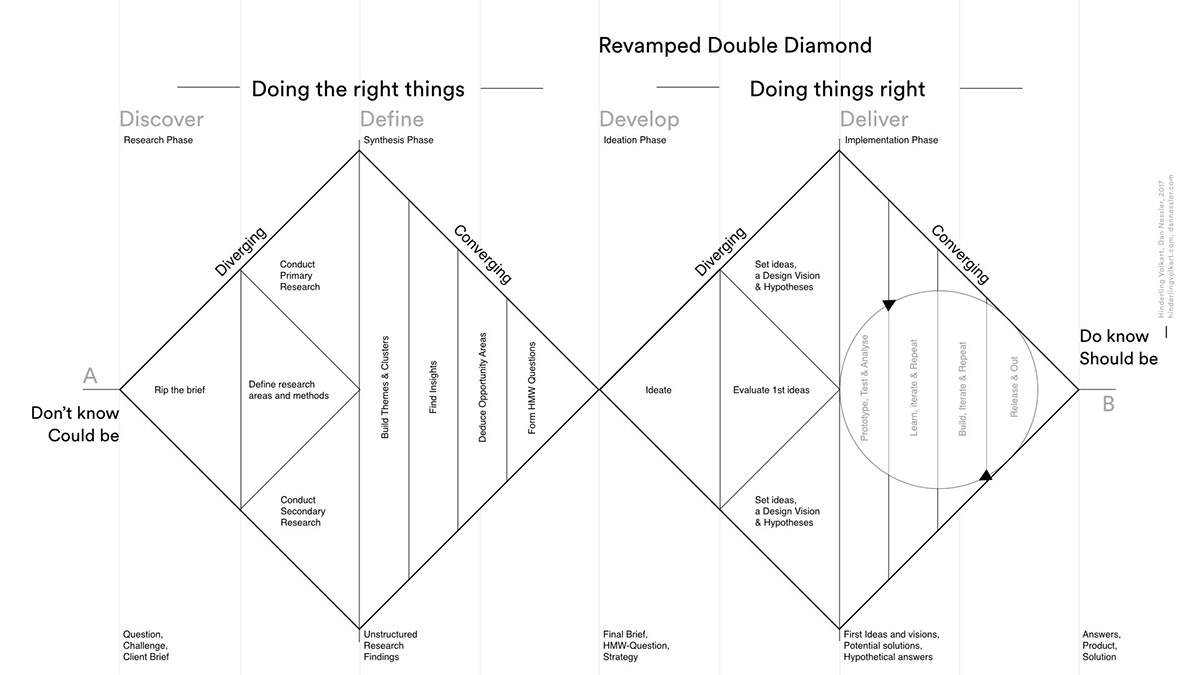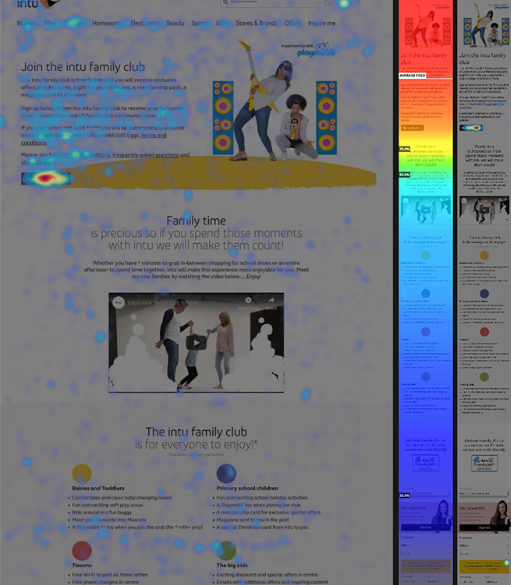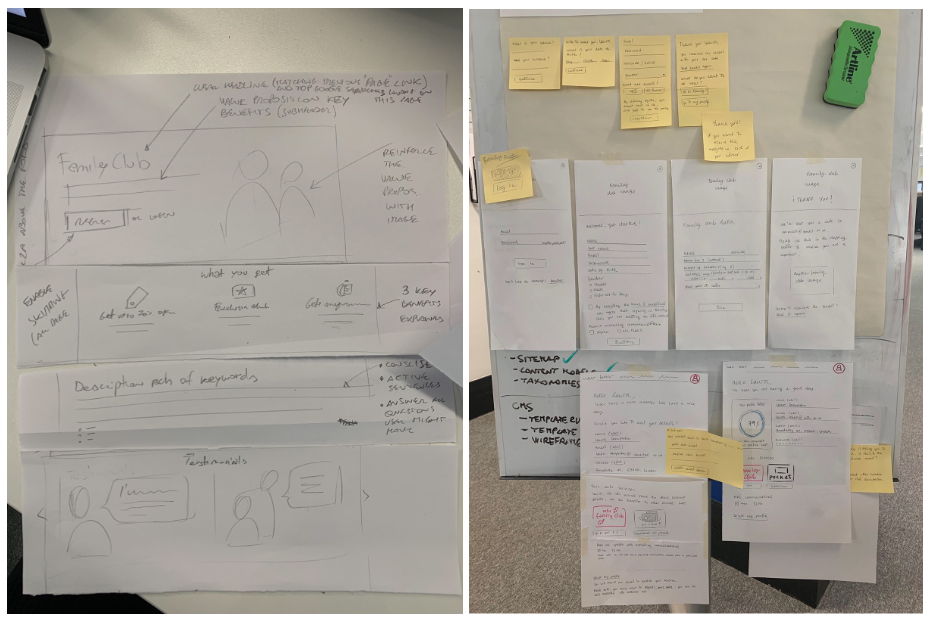
Family Club is a service provided by intu to families that shop at intu shopping centres. Being that it is a part of intu, it has a dedicated team as well as specific brand guidelines. The main benefit is that it allows families with children to enjoy events, activities and discounts in associated stores.
The Team:
💼 3 main stakeholders
👩💻 5 developers
🧑🚀 Head of UX
🕵️♂️ UX Strategy & Design / Design Research
👩🔬 Product owner
👩🍳 Project manager
My Role 👩💻
My role in the project was to participate in all activities, end to end, from immersion to delivery with a focus in flows, wireframing, and high fidelity prototyping plus facilitating stakeholder alignment.
The Goal ⭐️
When visiting the family club digital service, the user wants to be able to know what it is, the benefits and perks of joining the club, and be able to login or sign up easily.
The Challenges 💎
At the time of the redesign, the publicly accessible web page looked like the image below.

One of the main challenges was that the web page had been hardcoded 🏋🏼 which caused that the CMS users couldn't update any information and made the page impossible to scalate. Further to this, it wouldn't allow users to amend their data which was a cause for concern for something as simple as adding another child to the Family Club account. The process at the time was to talk to two separate customer service teams.
Because there was also 2 versions of the page, one for each of the global* and local* users, it had duplicated content across them.
On top of that, bounce rates were high, and engagement with the content was low and the onboarding process was practically nonexistent.
We decided that we could take advantage of the landing page that already has consistent traffic. This page would allow us to get the user redirected to their shopping centre, registered, provide options for current events and offers and to further provide information that they may need.
My primary challenge was to design a platform that would help intu understand how to position themselves to tell their story appropriately while providing a better service to the users.
* Global Users: Those who land on intu.co.uk/family-club (redirected to be local)
* Local Users: Those who land on intu.co.uk/shoppingcentre/family-club
* Local Users: Those who land on intu.co.uk/shoppingcentre/family-club
The Double Diamond Process 🔶🔷
I like the Double Diamond framework (initially released by the British Design Council) as a starting point because of its structure, clarity and dynamism

Image © Eva Schicker, 2018 for the article Why the Double Diamond is the Most Precious Diagram in UX Design.
Starting with the goal of gathering data and understanding the brief, we began stakeholder interviews. Through these interviews, we hoped to understand better what they need from the page and how much they knew about the current challenge intu was facing.
In the end, I could verify that the stakeholders did not align with each other and that they had different concepts of "success". Given this we needed to find out what the real issues were.
KPI process 📊 📈 📉
Another big problem with Family Club is that there was not a digital strategy planned. Data such as registrations, clicks on CTAs, use of offers, and visits to events were all unknown. At least we had access to fundamental data such as records in the shopping centre, traffic to the page, bounce and exit rates.
I noticed another of the significant components missing in the intu page was storytelling and hierarchy. Since the page had a lot of information, it was unordered, and this made it difficult for the user to understand the benefits of joining the club.
Through a guerilla testing session that we performed at the shopping centres, I learned the lack of structure caused a lack of trust. To me, trust in a service that deals with children is essential.

Heat maps from Hotjar. We can see what users do, how they behave and the content they engage with.
To understand what families that frequent intu shopping centres wanted precisely from this page, I ran ad-hoc interviews in shopping centres where family club activities were happening.
I learned that users didn't understand the benefits of joining the club, that they did not have a sense of community, and that they felt insecure because they could not change their data. The poorly designed visuals on the page had made them think it had broken.
I also did several recordings with Hotjar, which allowed me to see that there was a frequent pattern of users scrolling up and down the page and not clicking anything. Low discoverability of the page content is very likely to harm conversions.
Regarding the business goals, the Family Club page should allow intu to collect all the data required and specified by the stakeholders and continue to allow the retail team to generate sales with special offers, and boost engagement with the families in the shopping centres through the events.
Early family club props showing how I integrated additional structure and a registration process into the existing flows.

Family Club had two types of users, the unregistered one and the registered one, both of which had different needs.
The unregistered user needed to know what Family club consists of, its benefits, what other families think about the service, what kind of services intu offers for families and what brands work within this club.
The registered user needed to see the specific events and offers available to them, in addition to what happened in other shopping centres, always in a personalised way.
Bumps in the road 🧨
Due to the data managing problem, a parallel project was created, the intu account was a necessary feature in the moment that intu required post-login content. It was a different challenge itself that is not represented here.
With the project near its sign off, and the brand guidelines of the shopping centres changed, intu underwent a management change, switching all the family club stakeholders.
Iteration ⛳️


An early version of the user testing gave us a much more positive response than the previous testing. It also provided more precise information and alignment between stakeholders. The first version of the page is not live yet, and when it is launched, I will publish the corresponding metrics.
We also have plans for future iterations. With the help of a data analyst, and an A/B test tool called Optimise we will measure the success or failure of design variants, taking into account metrics such as conversion and repeated visits. Once in operation, each significant change in the design of the platform will be validated using this test method.
Personalization, customisation and a change of centre were out of scope, we designed a roadmap to see how to integrate this in the future.
Now enjoy the final signed out version of Family Club.
We also have plans for future iterations. With the help of a data analyst, and an A/B test tool called Optimise we will measure the success or failure of design variants, taking into account metrics such as conversion and repeated visits. Once in operation, each significant change in the design of the platform will be validated using this test method.
Personalization, customisation and a change of centre were out of scope, we designed a roadmap to see how to integrate this in the future.
Now enjoy the final signed out version of Family Club.




